Janghoe Quay (장회나루)
10.9 Km 0 2024-02-27
3811-19 Worak-ro, Danseong-myeon, Danyang-gun, Chungcheongbuk-do
Janghoe Quay is a pavilion where visitors can enjoy the breathtaking scenery of Gudambong Peak and Chungjuho Lake in Danyang. The towering mountains, cliffs, and the shimmering waves of Chungjuho Lake create a beautiful landscape. With the presence of the Chungjuho Excursion Boat Terminal, it is a popular destination for domestic and international travelers, offering the opportunity to take a cruise around Danyang.
Gudambong Peak & Oksunbong Peak (구담봉 & 옥순봉)
11.0 Km 42762 2020-06-11
Janghoe-ri, Danseong-myeon, Danyang-gun, Chungcheongbuk-do
+82-43-422-1146
Gudambong Peak and Oksunbong Peak (alt. 372m) are widely known as two of the “Eight Scenic Views of Danyang." Gudambong Peak (lit. Turtle Pond Peak) gets its name from the reflection of its rugged cliffs on the lake below, which is said to look like a turtle. Oksunbong Peak (lit. Bamboo Shoot Peak), well known for its magnificent scenery, was so named because its white and mossy rocks stand high like fresh bamboo shoots.
The historic book Yeojiseungnam (Geographical Survey of Korea) describes how Kim Il-son, a civil officer in the Joseon Dynasty, greatly extolled the beauty of its marvelous ravines. Both Gudambong Peak and Oksunbong Peak offer spectacular views of Chungjuho Lake and Geumsusan Mountain.
Danyang Bobaljae Pass (단양 보발재)
11.7 Km 0 2024-02-26
San 26-7, Baekja-ri, Yeongchun-myeon, Danyang-gun, Chungcheongbuk-do
Bobaljae Pass is located 540 m above sea level on the northern side of Sobaeksan Mountain. It is also known as Godeuneomijae Pass. The S-shaped curve is known for wildflowers in spring and fall foliage in autumn, so one can either take a leisurely drive along the road or park one’s car at the observatory and get some pictures. Guinsa Temple and Ondal Tourist Area nearby are also good to visit.
Jecheon Wild Herb Village (제천 산야초마을)
12.1 Km 28238 2024-02-26
3 Oksunbong-ro 6-gil, Susan-myeon, Jecheon-si, Chungcheongbuk-do
Jecheon Wild Herb Village, nestled between Geumsusan Mountain and Cheongpungho Lake, benefits from a pristine mountain environment that has supported the production of medicinal herbs and forest products for oriental medicine since ancient times. This village continues its agricultural practices to this day, offering visitors the opportunity to experience natural medicines, forest products, and agricultural goods. For those interested, there are options to stay in the village for a week or a month, allowing for an extended exploration of its natural bounty and traditions.
Guinsa Temple (Danyang) (구인사(단양))
12.2 Km 47661 2024-03-15
73 Guinsa-gil, Yeongchun-myeon, Danyang-gun, Chungcheongbuk-do
+82-43-423-7100
Jecheon Oksunbong Suspension Bridge (제천 옥순봉 출렁다리)
12.2 Km 0 2022-04-08
342, Oksunbong-ro, Jecheon-si, Chungcheongbuk-do
+82-43-641-6738
Near one of Korea's Scenic Spot, Oksunbong Peak, Oksunbong Suspension Bridge provides visitors with a thrill stretching 222 meters long, 1.5 meters wide. The Deck Road and trekking trail made of palm tree mat completes the total length of 944 meters. Visitors can also easily get to Cheongpungho Lake and Oksunbong Peak.
Yeongju Birosa Temple (비로사 (영주))
12.8 Km 17872 2021-06-11
661-29, Samga-ro, Yeongju-si, Gyeongsangbuk-do
+82-54-638-5033
Birosa Temple is located at the southern foot of Birobong, the highest
peak of Sobaeksan Mountain. It was founded by revered Buddhist monk Uisang Daesa in the 20th year of King Munmu’s reign (AD 680) during the Silla Kingdom. The temple’s Buddha statues and the flagpole supports reveal the long history of this ancient temple.
To the left of the entrance to Birosa Temple stand a pair of flagpole supports. The 4.8-meter-high flagpole supports facing each other have a meticulous structure. Inside the temple precincts is Jingongdaesa Bobeoptapbi, a stele with a stone turtle base erected in honor of the great monk Jingong Daesa.
The temple enshrines the Amitabha and Vairocana Buddha statues, which were created during the Silla Kingdom in the late 9th century. Both of these Buddha statues realistically depict the human form, and show similar characteristics, which reveal that they were crafted by the same artisan. Preserving such valuable cultural heritages, Birosa Temple also has a serene view of Birobong Peak on
Sobaeksan Mountain.
* Major cultural properties: Stone Seated Amitabha and Vairocana Buddha Statues (Treasure No. 996), Samgadong Stone Flagpole Supports (Provincial Tangible Cultural Property No. 7)
Seonam Garden (선암가든)
13.1 Km 29089 2024-03-18
38, Sangseonam-gil, Danseong-myeon, Danyang-gun, Chungcheongbuk-do
043-422-1447
Seonam Garden serves folk dishes at the foot of Doraksan Mountain, one of the 100 most famous mountains in Korea. Its signature menus are tojongdak baeksuk (whole chicken soup) and maeuntang (spicy fish stew). Visitors can also enjoy sanchae jeongsik (wild vegetable dish set menu), deodeok gui (grilled deodeok), healthy dotorimuk (acorn jelly salad), and handmade dongdongju (rice wine, similar to makgeolli), along with buchimgae (pancakes) and sondubu (handmade bean curd). These are accompanied by about ten elegant and delicious side dishes.
Danyang Ondaldonggul Cave (단양 온달동굴)
14.0 Km 42133 2020-01-02
23, Ondal-ro, Yeongchun-myeon, Danyang-gun, Chungcheongbuk-do
+82-43-423-8820
Ondaldonggul Cave is located underground at the foot of Seongsan Mountain, where Ondalsanseong Fortress is situated. It is a natural limestone cave that is estimated to have begun forming around 450 million years ago. The total 760 meter-long cave covers an area of 349,485 square meters. The cave mouth is two meters high, while the cave itself is 5 to 10 meters high and about 5 meters wide. The cave features stairway structure and contains an abundance of beautiful stalagmites and stalactites. The average temperature of the cave maintains 14 degrees Celsius in summer and 16 degrees Celsius in winter, making it a perfect all-year-round attraction. The cave is rich in underground water resources and there is a 0.8 to 1 meter-deep cave river flowing at the bottom of the cave floor. The cave also has over 40 small ponds that are inhabited by a variety of living organisms like fish and insects.
Situated on top of the mountain peak to the left of the cave is Ondalsanseong Fortress. The fortress has been preserved in its original form throughout some 1,400 years and shows the advanced building skills of Goguryeo Era (37 BC-668 AD). The annual Ondal Culture Festival is held every October around Ondaldonggul Cave and Ondalsanseong Fortress in memory of the legendary love story between General Ondal and Princess Pyeonggang. Other attractions in the area include a theme park and Jangseung (Korean traditional totem poles) Park.
Jeongbangsa Temple (정방사)
14.1 Km 16962 2021-11-10
165, Oksunbong-ro 12-gil, Jecheon-si, Chungcheongbuk-do
+82-43-647-7399
Located on a ridge of Sinseonbong Peak (845 meters) nearby Geumsusan Mountain, Jeongbangsa Temple was founded by Buddhist Monk Uisang in the second year (662) of King Munmu’s reign during the Silla dynasty. Jeongbangsa Temple is a branch of Beopjusa Temple located on Songnisan Mountain and is a well known oratory amongst Buddhists. The temple offers fantastic views of Cheongpungho Lake that are said to calm and clear the mind. A unique feature of this temple is the mountain wall making up a portion of the temple roof.
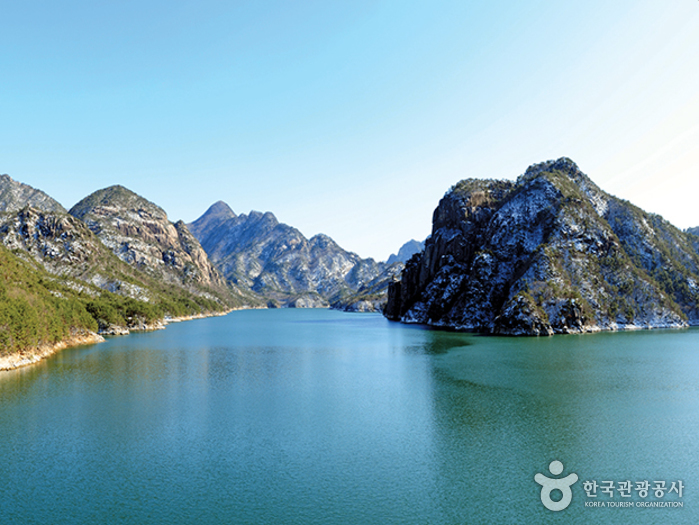
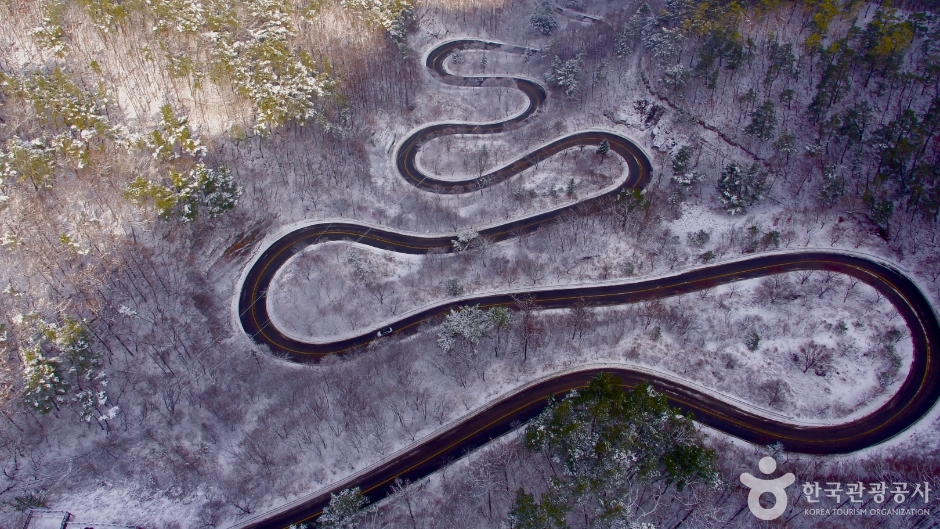
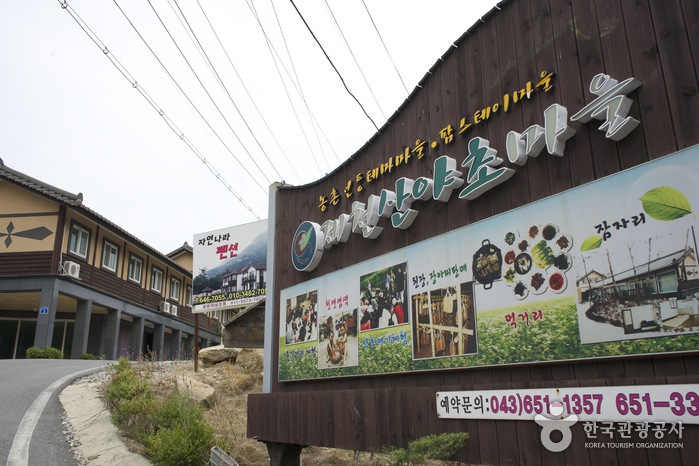
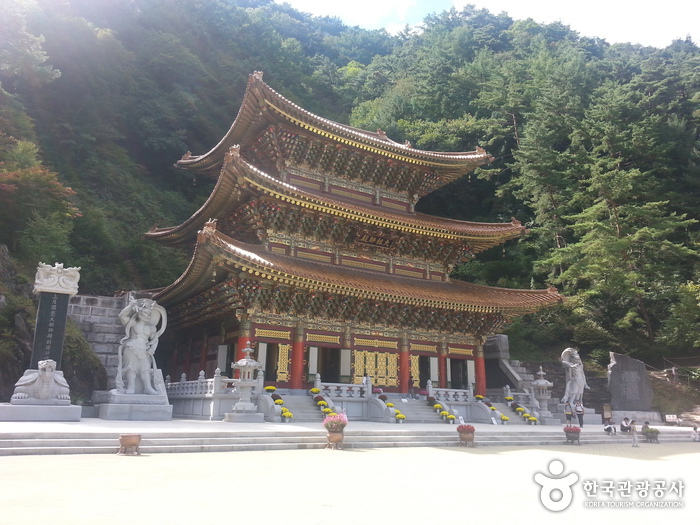

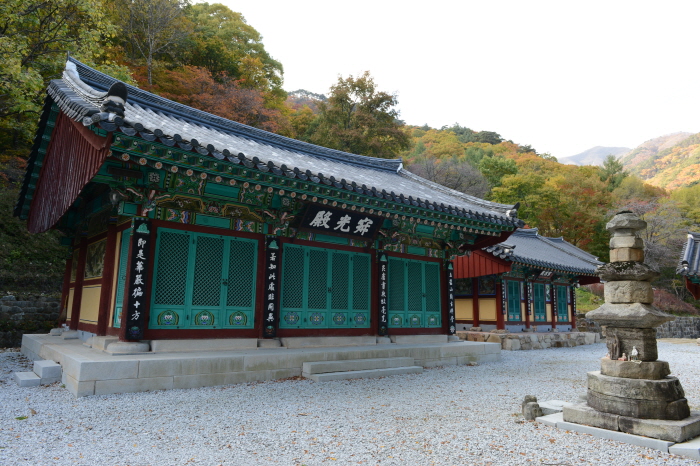
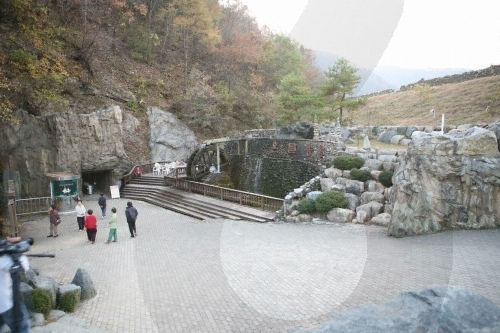
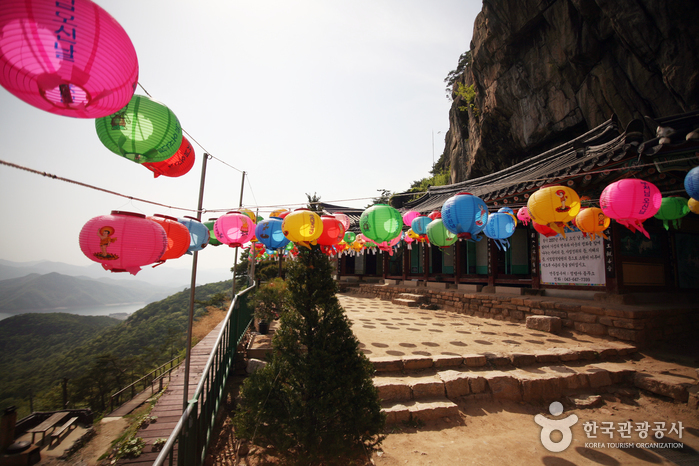
 English
English
 한국어
한국어 日本語
日本語 中文(简体)
中文(简体) Deutsch
Deutsch Français
Français Español
Español Русский
Русский